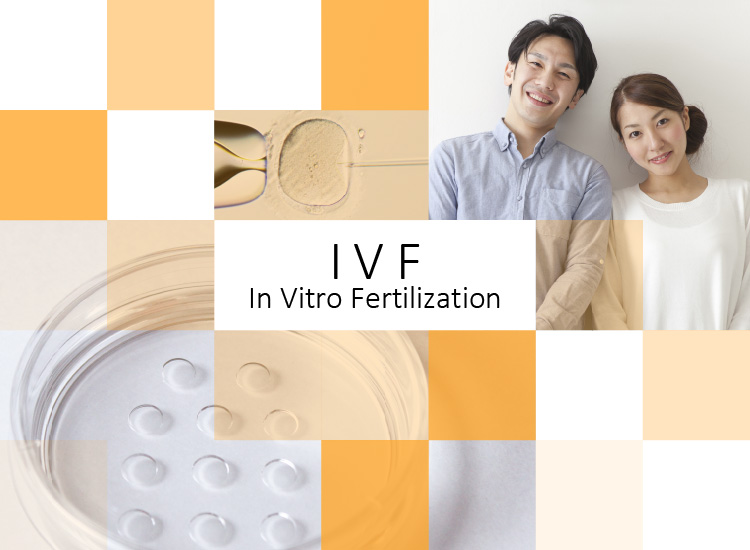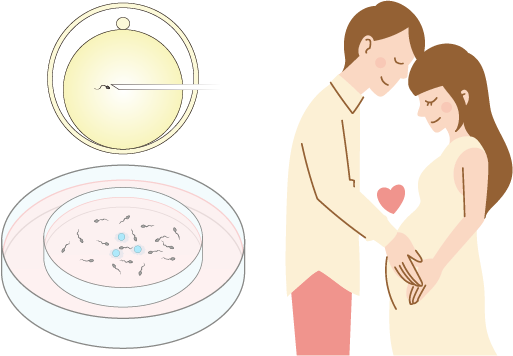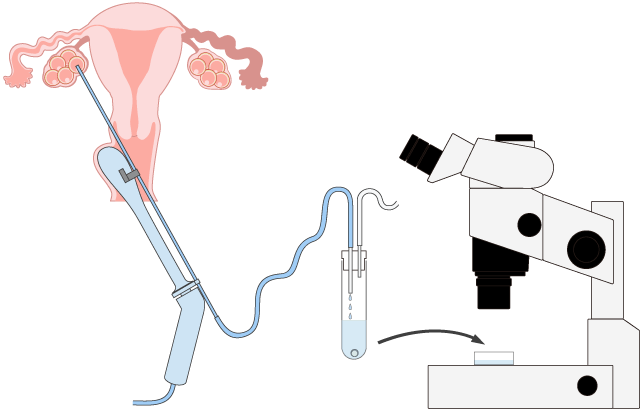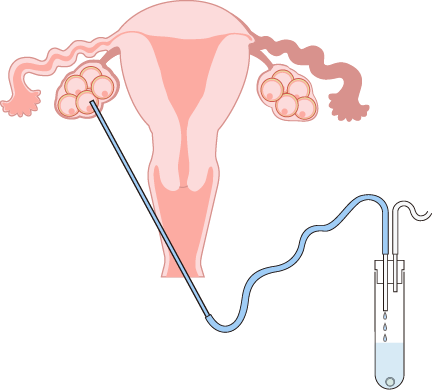Semen Collection
On the day of oocyte Pick-up, we will also take a sample of your husband’s semen.
The semen entrusted to us will have a concentrated wash with a special washing solution, and then we will collect only the sperm with good motility.
Fertilization
Fertilization is done by an embryologist in the afternoon of the day of egg retrieval.
The most basic fertilization method is the conventional method, which involves sprinkling sperm adjusted to an appropriate concentration onto the egg and waiting for fertilization.
In addition, there is intracytoplasmic insemination (ICSI), in which a single sperm is directly inserted into the egg cell using a fine needle under a microscope.
Which method to use is determined by counseling in advance, looking at the progress of treatment and semen data.
Conventional
We will sprinkle the sperm that has been adjusted to the appropriate concentration on to the oocyte that is in the state of being covered by a cell.
The sperm will melt the cell around the oocyte, and by the power of the sperm will penetrate the cell.

ICSI
To the oocytes that have detached the surrounding cell by enzyme treatment, a single sperm will be injected by needle insertion while looking under the microscope.
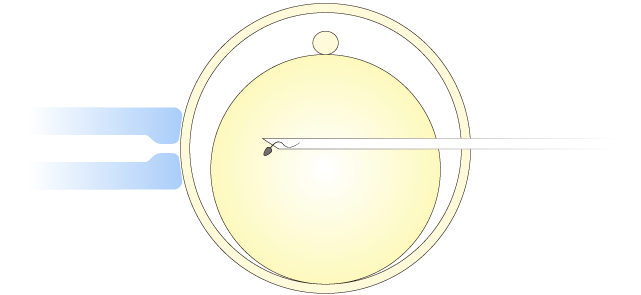
Fertilization Confirmation / Culture
Whether you use conventional fertilization or ICSI fertilization, both will develop in the same way.
If fertilization goes well, we will be able to see two nuclei within the embryo cell.
This is the “male pro-nucleus” derived from sperm and the “female pro-nucleus” derived from the oocyte.
ertilization is complete when the two pro-nuclei are fused together.
The one cell (embryo) that comes from the fusion of the sperm and oocyte will then have repeated cell division and soon emerges as new life.

|

|

|

|

|

|
|
Pronuclear
|
Fusion
|
Divided
into 2
|
Divided
into 4
|
Divided
into 8
|
Blastocyst
|
The IVF-ET growth process is watched over and while recording it in detail is carefully cultured until implanted into the uterus.
Embryo Transfer (ET)
The embryo transfer will take place two days after the oocyte Pick-up when the embryo has developed to the point that it has divided about 4 to 8 times.
While looking at the data and having vigorous meetings with the doctor and embryologist, only the best embryos will be selected to implant into the uterus.
In some cases, with a little longer culture period, we may transfer the oocyte Pick-up when they have reached blastocyst stage, at around the fifth to sixth day (Blastocyst Transfer=BT).
We usually transfer only up to two blastocysts, in order to avoid multiple pregnancies.
In the case of there being a surplus it is recommended to undergo cryopreservation (freeze-preservation).
If you didn’t get pregnant after trying IVF-ET the first time and you still desire a second child, the burden on the body will be less if we defrost and transfer another embryo.
We will supplement with progesterone hormone by use of an injection or oral medicine in order to help the implantation of the embryos implanted after transplantation of the embryo (blastocyst).
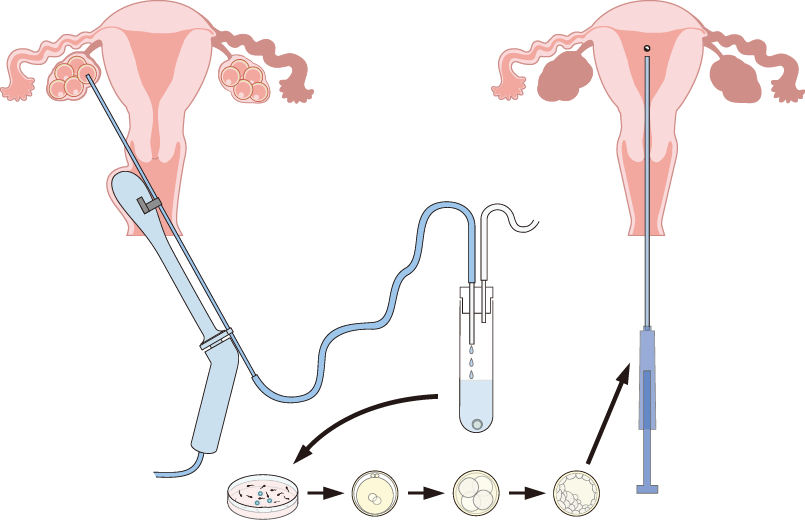
Pregnancy Decision
Test for pregnancy.
Though there are many methods in the treatment of infertility, none of them are the absolute way and unfortunately it doesn’t mean that even the IVF-ET will be successful.
Infertility treatment is something that you can only challenge again and again, and on top of that the fact of the matter is that it is difficult to succeed in this as one gets older.
Based on that fact, our clinic thinks that IVF-ET to be a very effective measure.
All of our staff hopes that we can provide all the assistance needed to all of those who are hoping for a child.






